The wait is over: I present my Wowtac A1S review for your consideration.
That may seem a little dramatic, but I get questions about the Wowtac flashlights on a fairly regular basis. The A1S was the first of the company’s flashlights I’ve purchased. Since then, I have also picked up a Wowtac A4 V2 and Wowtac A7 for review.
They get good reviews on Amazon and some of the folks on the r/flashlight subreddit seem to like them. But this review was spurred by one of my readers here.
Reader John Smith read my Anker LC90 review and recommended I take a look at this light as an inexpensive alternative to higher-priced tactical flashlights like the Streamlight models I mentioned in that article. I ordered one up immediately and have been testing it for the past few months.
Spoiler alert: some of you may not like my opinions about this light. But I hope John and other readers will appreciate my willingness to spend my own money to test the gear you guys are interested in.
So, let’s get to the testing…
General Information
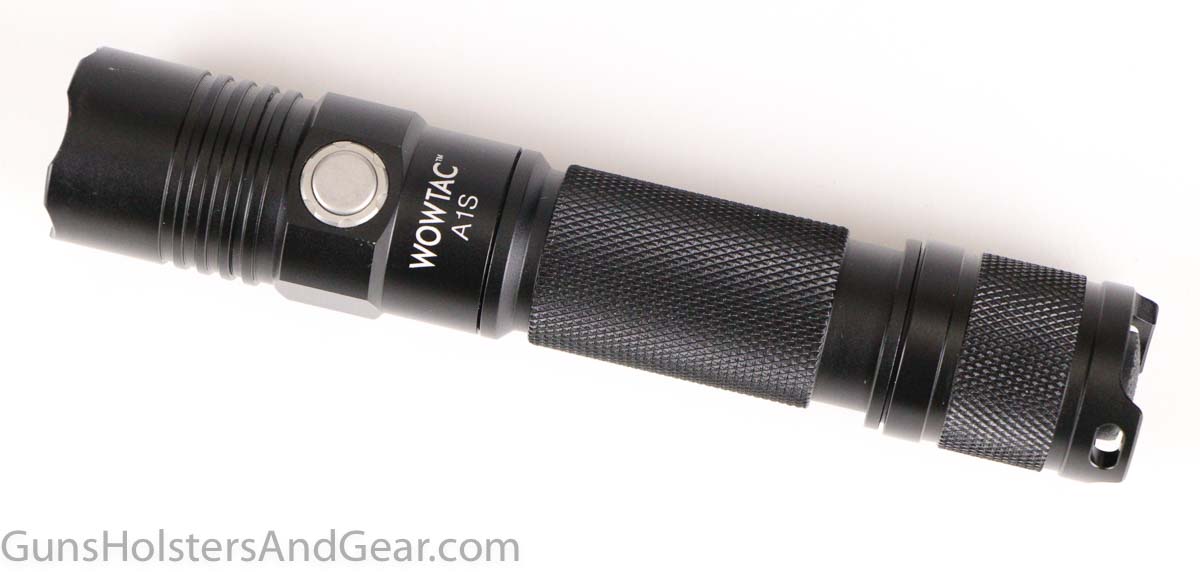
Wowtac is a flashlight brand that is owned by ThruNite. The company offers a range of inexpensive flashlights that claim high light output numbers. They seem quite popular on Amazon – probably as a combination of the low price and high lumen ratings. Although rating manipulations are a well-known issue at Amazon.
The A1S is said to produce more than 1,100 lumens with a CREE XP-L V6 LED. It has a variety of modes including four different constant output levels plus strobe and SOS functions.
The body of the flashlight is made of “aircraft-grade aluminum” but the company does not offer specific information about the metal. Included with the flashlight is a 18650 battery.
Battery
Wowtac uses a 3.6v 18650 lithium-ion (Li-ion) rechargeable battery to power the A1S. The battery is rated for 3,400 mAh, has a built-in micro-USB charging port and is made in China. It is Wowtac branded.
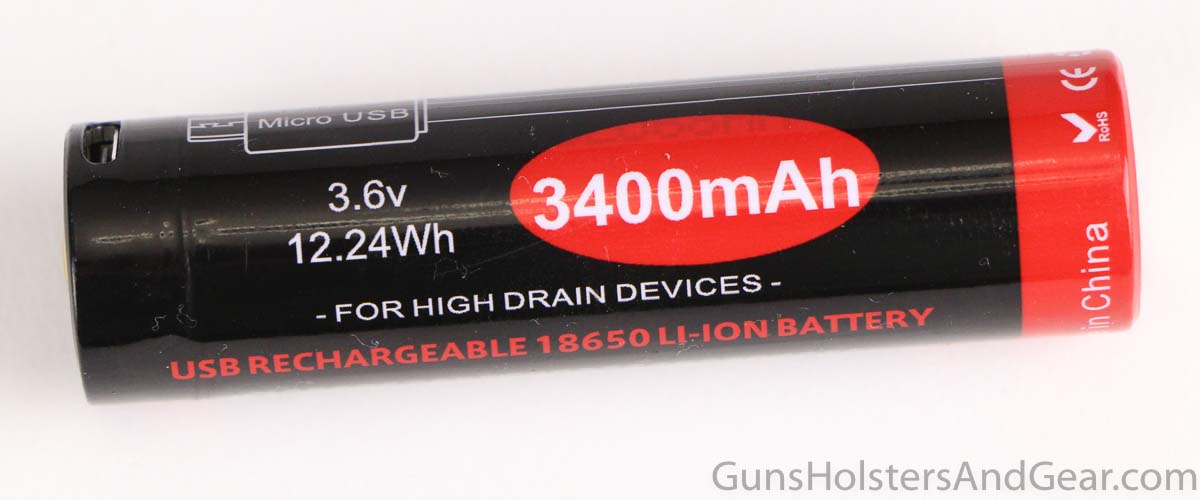
The included 18650 battery is not marked as having a protection circuit.
According to the instruction sheet, the A1S can handle operating voltages of 2.7v – 4.2v.
Controls
The Wowtac A1S has two button switches that control all of the flashlight functions. The tail switch turns the flashlight on and off. A partial press allows for momentary activation. A full press and click turns the flashlight on in a constant output mode.
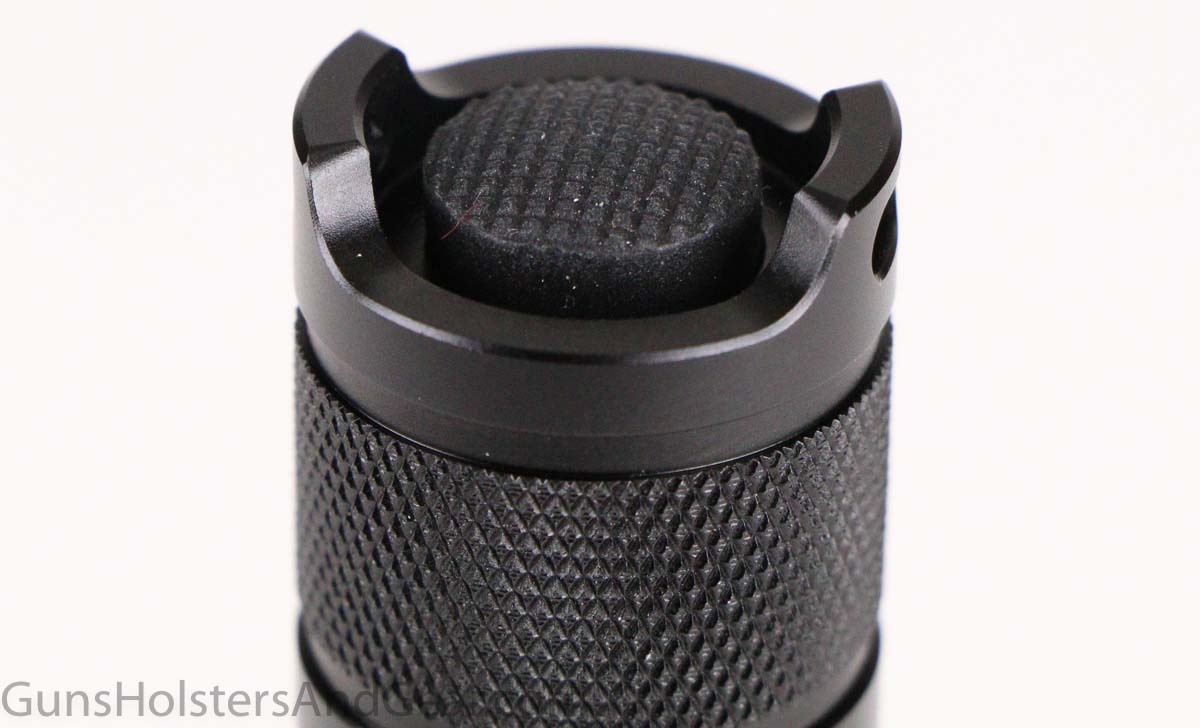
Wowtac protects the tail switch from accidental activation with aluminum “ears” that are taller than the switch.
A second switch is located near the head of the light. It cycles through the different modes: low – medium – high – turbo – SOS. This switch has no mechanical protection or any way to lock it out. An accidental press will advance the output to the next mode.
Note: The A1S tail switch failed during normal use. Scroll down to the Carry & Use section for additional information.
Specifications
Specifications are only as good as the tool used to measure them. For flashlights, there is a voluntary standard for testing and reporting common specs called ANSI/PLATO FL1 Standard. This standard is designed in a way that consumers can better compare different flashlights before making a purchase.
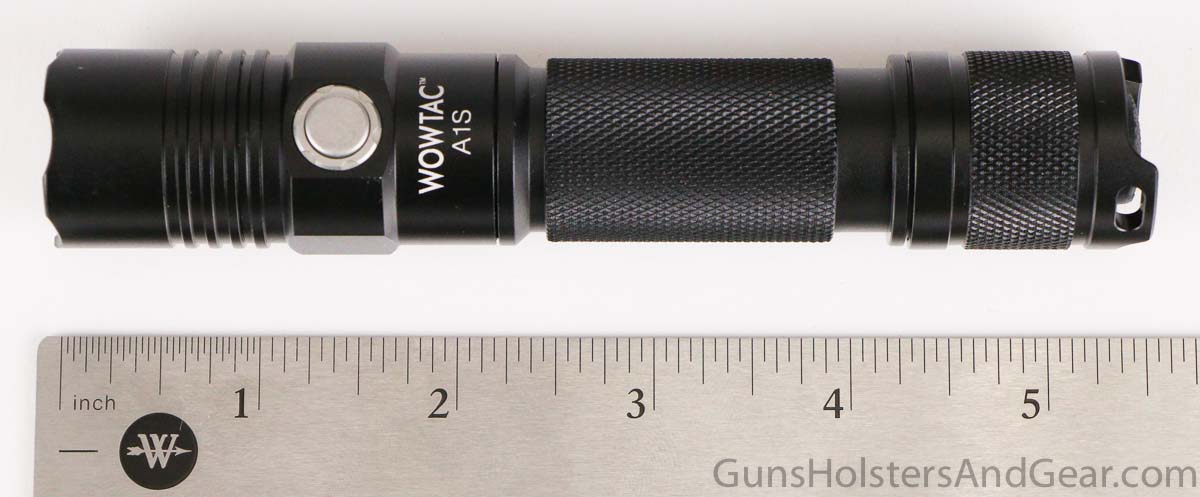
Unfortunately, there are ways to game the standard. One way a manufacturer might try to dodge the standardized testing & reporting is to use a non-enforceable standard.
Wowtac states on its website and in the instruction manual that the A1S is tested to the ANSI/NEMA FL1 Standard. This was the original attempt to standardize flashlight testing and reporting and is no longer used. In fact, it hasn’t been used for years. It was also created by a body that has no enforcement ability to ensure the specifications are accurately reported to consumers.
I am not saying Wowtac has intentionally used an unenforceable standard in an effort to provide inflated specifications. I have no evidence to support that idea.
Here are the Wowtac A1S specifications:
| weight (as stated by manufacturer) | 3.1 oz without battery* |
| weight (as measured) | 4.8 oz with included 18650 battery |
| length | 5.4″* |
| impact resistance | 1.5 m |
| water resistance | IPx7 (1 m for 30 minutes) |
| light output | 1,150 lumens** |
| peak beam intensity | 19,200 candelas |
| stated runtime | 3 hours |
| beam distance | 277 lumens |
| MSRP | $39.95 |
** Wowtac states that the most powerful output mode (Turbo) may damage the light if run for more than 10 minutes. Nothing in the documentation suggested the light had a thermal protection circuit that would step the light down to lower outputs if it begins to overheat.
Part of the FL1 standard (all iterations) are very specific requirements regarding the display of specifications. For the impact resistance, the number reported is supposed to be a whole number (rounded down) which is not what Wowtac uses in any of its literature. Some might say this is prima facie evidence that the company does not strictly adhere to the FL1 standard.
Testing
As mentioned in the Specifications section above, the voluntary flashlight testing standard is called the ANSI/PLATO FL1 Standard. While the FL1 Standard is a good start, it is not perfect and can be gamed. Hence, I conduct my own testing to determine if the light meets my needs and to compare the lights I test to one another.
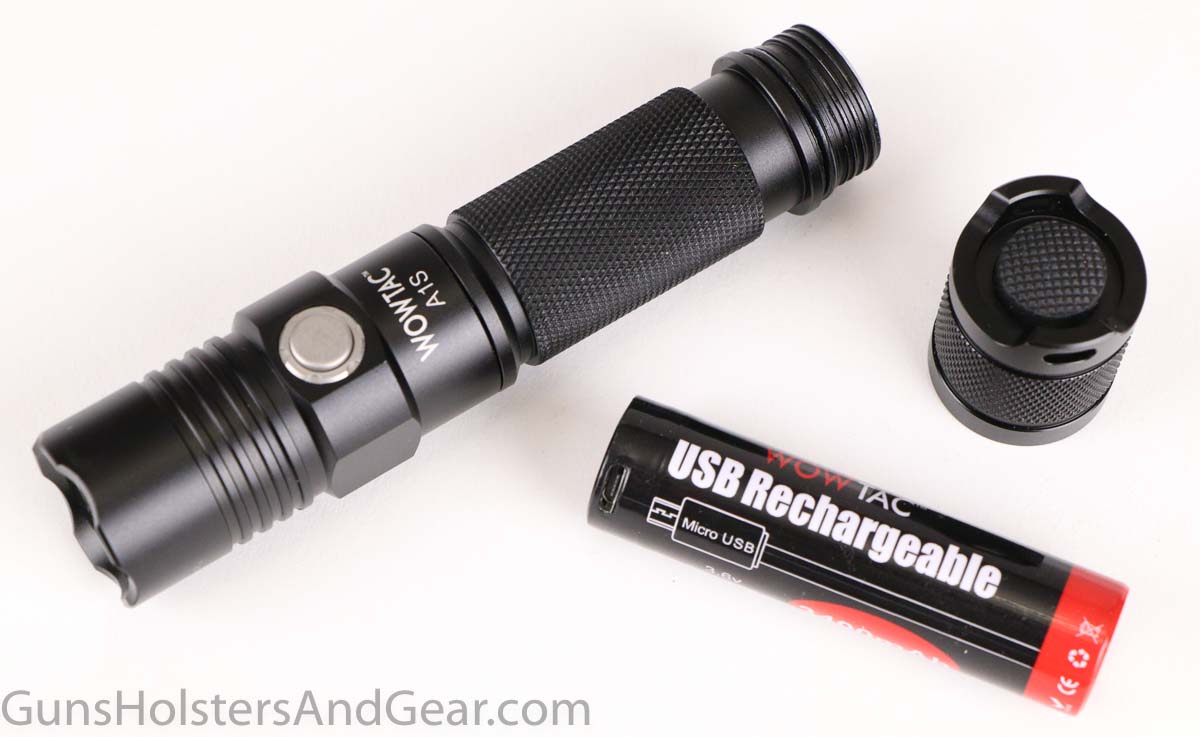
Also, when a company uses a deprecated standard, it is tough to know how accurate its reported information is.
For more information on the FL1 Standard and my own testing protocols, please visit my flashlight review page here.
Output Over Time
If you want to quickly see how much light this flashlight emits over the life of a battery charge, scroll on down.
For everyone else, let me explain a little about how runtimes are calculated and marketed.
One of the flaws in the FL1 Standard is the way output and runtime are reported. Essentially, the total output (measured in lumens) is merely the peak output after the light is turned on with a fresh set of batteries.
Runtime is reported as the length of time it takes the flashlight to dwindle down to 10% of the output number. Yet, the way the information is presented, many consumers think it means the flashlight will output the peak measurement for the entire duration of the runtime. Sadly, nothing could be farther away from the truth.
I measure output over time as a percentage of the initial output. With my testing, you see a relative measurement of how much light is put out over a period of time.
The first output over time test I conducted was in the Turbo mode. The results are below:
As you can see in this test, the output drops substantially at the two-minute mark. This is likely designed into the flashlight as a power-saving measure.
Functionally, it allows the company to report a very high output while still recording a long runtime. At least Wowtac is clear about its use of an automatic output drop. Some companies are not.
Even so, the light output dips to less than 30% within the first 30 minutes. However, the control circuitry does produce a boost to the light so that many of the peaks are above 70%. By one hour, the average output is below 50%.
Running the light in High mode, I recorded the following:
The measured dips and peaks were pretty extreme.
Measured Candela
Measuring the peak beam intensity and beam distance is a straightforward calculation based on the measured lux of the beam at a known distance.
In the Turbo mode, I calculated the peak beam intensity of the Wowtac A1S to be 12,133 candelas with a beam distance of 220 meters. This is significantly below the manufacturer’s reported specifications of 19,200 candelas and 277 meters.
Running the same test on a variety of other flashlights from companies including SureFire and Streamlight have been much closer to the manufacturer reporting. This suggests that the accuracy of my testing is valid.
Heat Generation
Heat generation is one aspect of flashlight use that is rarely talked about. As a guy who’s had to search large buildings and wooded areas for armed felons, I know that a flashlight may need to operate for more than just a minute or two in any given instance.
High power lights like the A1S can become too hot to hold if the system isn’t efficient with a good way to dissipate generated heat.
The first chart shows the amount of surface heat generated by the A1S in the Turbo mode. Keep in mind that this mode automatically steps down its output after two minutes. You can click on the image for a larger view.
As you may be able to see in the graph, the temperature ramps up quickly during the first two minutes of operation. Once the flashlight drops its output, the temperature increase continues, but at a more moderate pace.
I ran a temperature over time test during the output over time test for the High mode. This graph is shown below:
At first glance, it may appear that the flashlight heats up more quickly in the High mode than in the Turbo mode. However, the High mode runs significantly cooler – never breaking 120° F.
Note: After encountering the extreme heat generation during my Wowtac A7 review, I wanted to run a similar test on the A1S. However, the A1S no longer worked.
Visual Comparisons
They say a picture is worth 1,000 words. I suspect that good photos are far more valuable than that.
Here’s a look at the Wowtac A1S in Turbo mode. The distance to the target is 9 yards (~8.2 meters.)
The slider can be moved left and right. On the left is an image with ambient light only. The image on the right is with the flashlight activated.


The next pair of images shows the A1S as compared to the Wowtac A7. The A1S is on the left while the A7 is on the right.


For another comparison, let’s take a look at the A1S and the similarly sized and spec’d Fenix PD35. The Wowtac is on the left.


Impact Resistance
As shown in the specifications section above, Wowtac claims the flashlight has a 1.5 meter impact resistance. Notwithstanding any problems with the reporting of 1.5 meters being out of step with the ANSI/NEMA FL1 requirements, I tested the light in a manner similar to the FL1 testing procedures.
If you imagine the flashlight as a cube with six sides, I dropped the flashlight from each of those sides onto cured concrete from a height of 1.5 meters.
After the testing, the light seemed to work normally and had no obvious cracks or other damage that would allow for water intrusion.
Note: As the light failed to function at a later time, I wonder if the problems stemmed from the impact resistance testing phase of this review.
Water Resistance
Wowtac states the A1S is IPX7 rated. This means the flashlight is able to survive complete immersion in water to a depth of 1 meter for no less than 30 minutes.
To test this, I suspended it with paracord at 1 meter in my pool. After 30 minutes, the light had no obvious water intrusion and appeared to work fine.
Carry & Use
The Wowtac A1S is about the same length as my SureFire G2X and Streamlight ProTac HL flashlights. I use both of those lights regularly for carrying after dark. The A1S is a little thinner than both of those, so it has a relatively good size for pocket carry.
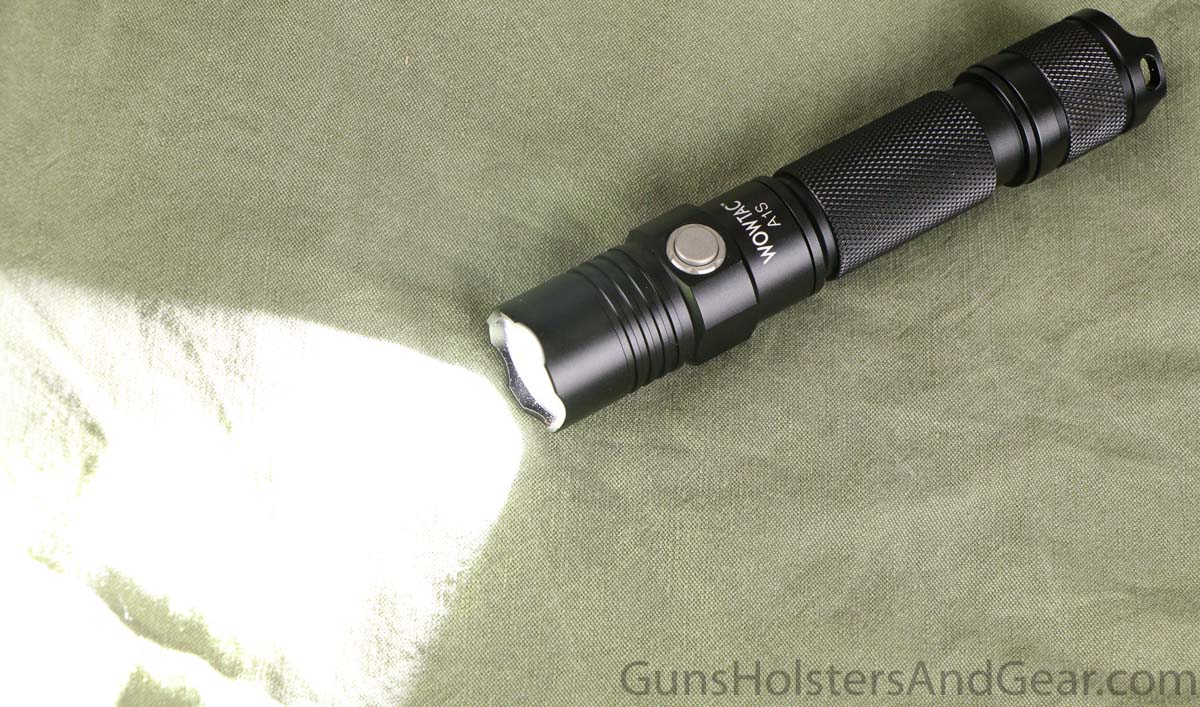
Even so, you will not want to slip the A1S into a fitted pair of slacks. It works much better in a comfortable pair of jeans or in the cargo pocket of your shorts or pants.
The tail cap switch was a little stiff during use, but it never prevented me from activating the flashlight when I wanted it in constant-on mode.
I was not enamored with the side switch for mode selection. The button had a cheap feel to it – like it could fail easily. Further, it stuck up from the body significantly. I found that my hand would sometimes cover it and depress it. Randomly timed changes in the output mode is a problem for me.
For momentary activation of the light – such as when one is clearing a room or building – the Wowtac tail switch was adequate but not very good. I much prefer the tail switches found on lights like the SureFire G2X, Fenix PD35, Olight M2T Warrior and Streamlight ProTac HL.
With infrequent use for about two months, the flashlight failed.
It seemed to work fine one day, but then it was a complete failure the next day. It could occasionally get a flicker of light from it, but it would never click on or reliably activate in momentary mode. I tried different 18650 battery packs (including another Wowtac) and other tail cap switches. Nothing seemed to work.
This was with infrequent use. If I used the light more regularly, I wonder how soon it would have ceased functioning.
Final Thoughts
As the light stopped working during normal use, I cannot recommend this flashlight for any use.
Even if the light continued to work, I would have a hard time recommending it for tactical use. The mode switch on the head of the unit is exposed and allowed for accidental activation during regular use. Having the modes change accidentally is not compatible with use in a potential lethal force encounter. Also, the stiff tail switch made the momentary-on function more difficult than it needs to be.
If the flashlight had not died, would it be a good hobbyist or general-purpose flashlight? Yes. If you like a lot of light for cheap, this could be a decent option if it worked.
Based on my testing of this light and the Wowtac A7, I am hesitant to recommend the Wowtac brand for any purpose. There are other lights on the market that, in my opinion, perform much better and without the durability or heat generation issues I have encountered with Wowtac lights.
The Fenix PD35 is extremely similar in appearance and operation to the A1S. However, I’ve had a much better experience with that flashlight.
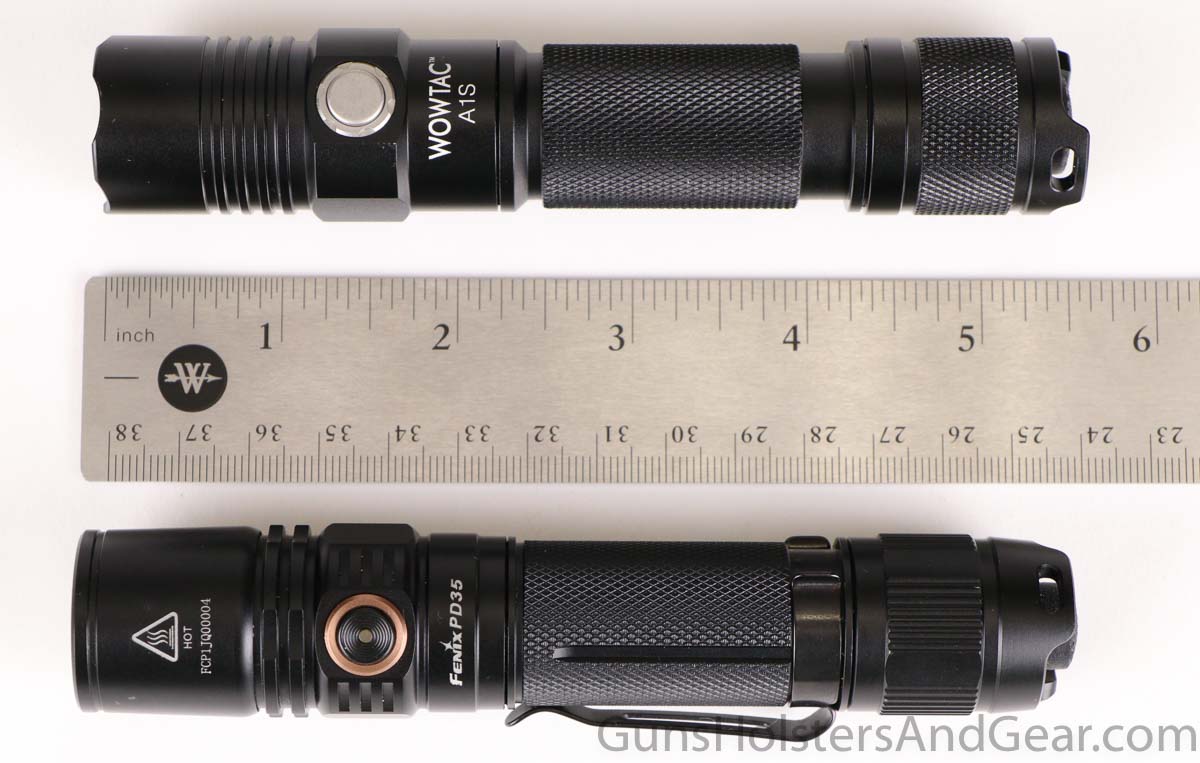
Likewise, the Olight S30R Baton III proved to be a good performer in a slightly smaller package. There are also a range of good choices from SureFire and Streamlight.
The downside to the alternatives is that they are all more expensive than the Wowtac A1S. The upside is that all of mine are still working.
Recommendations
Even though my Wowtac A1S failed during the review process doesn’t mean you will have the same results. So, if you wish to purchase one, you can do so through my affiliate link to Amazon here.
Alternatively, there are several other flashlights you might want to purchase instead. These are similar lights that operate on rechargeable 18650 batteries:
– Fenix PD35
– Olight S30R Baton III
– Streamlight ProTac HL-X
Please consider using one of these links when you would like to purchase something from Amazon. I earn a small commission on them and that provides the means for me to continue to do these kinds of honest reviews.
Last update: August 2, 2021
Disclosure
All of my reviews include a full disclosure of all potential biases that may influence my reporting.
The flashlight used in this review was purchased by me through Amazon.com. I paid the full price and did not receive any discount or repayment for its purchase. (Note: Wowtac is known to offer reimbursements for flashlights purchased to review. I have received no money or other consideration from them.)

I decided to review this light at the suggestion of a reader. Wowtac did not ask for me to review this flashlight, and my only contact with the company has been through its customer service department when I requested additional information on the A1S specifications.
Wowtac is not a sponsor or advertiser. I have no business interest in Wowtac or any other flashlight manufacturer.
GunsHolstersAndGear.com is a for-profit business. I started the company and it is independent of the conglomerates that currently own most of the major firearms sites out there. My opinions are my own.
I earn money through the use of affiliate links. These links go to companies like Amazon and Palmetto State Armory. Should you decide to purchase something from one of those companies, I make a small commission.
The links do not change your purchase price. I do not get to see what any individual purchases.
If you have any questions about my review feel free to leave a comment below. I’d also appreciate you sharing your experiences with the Wowtac (if you own one) or other flashlights. Everyone benefits when we share information.
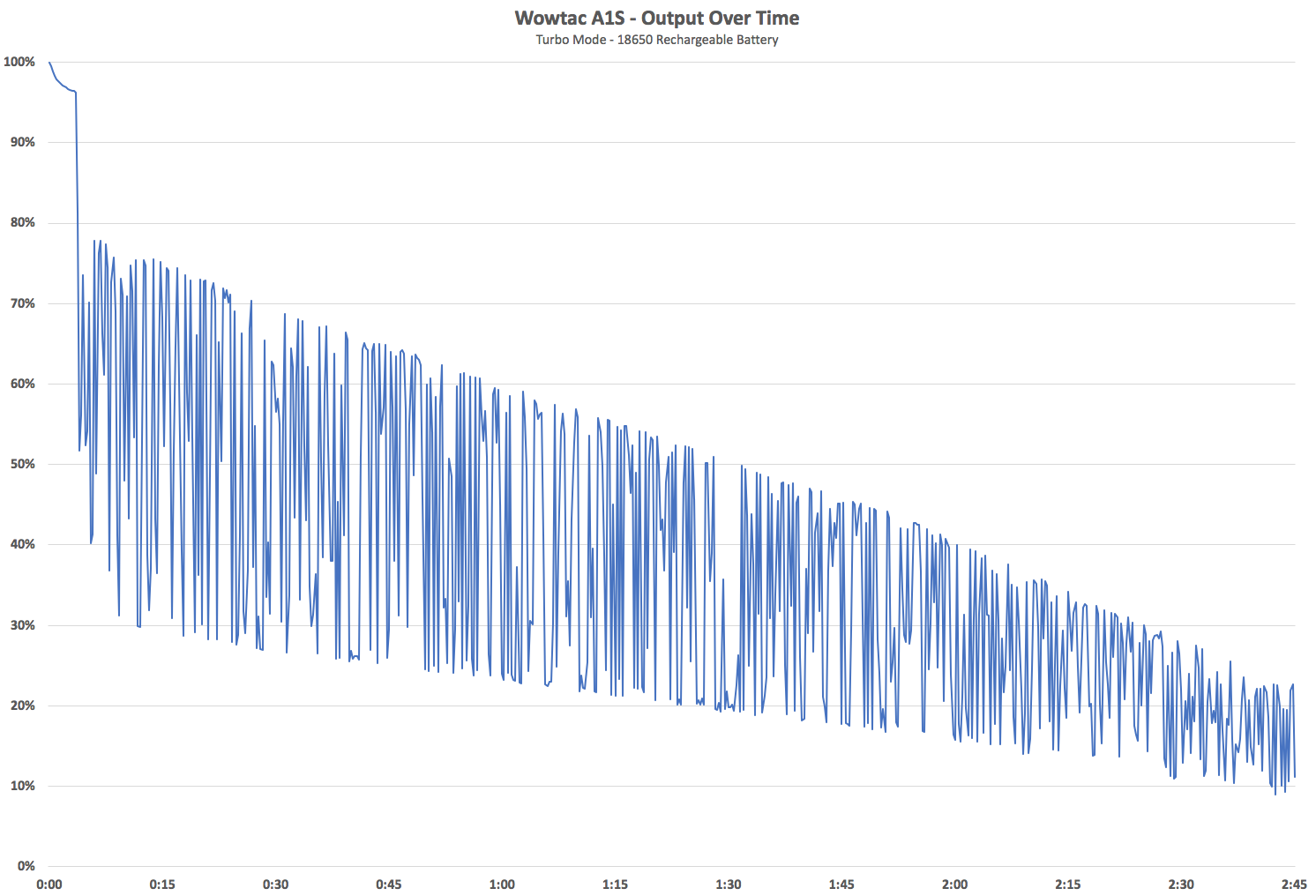
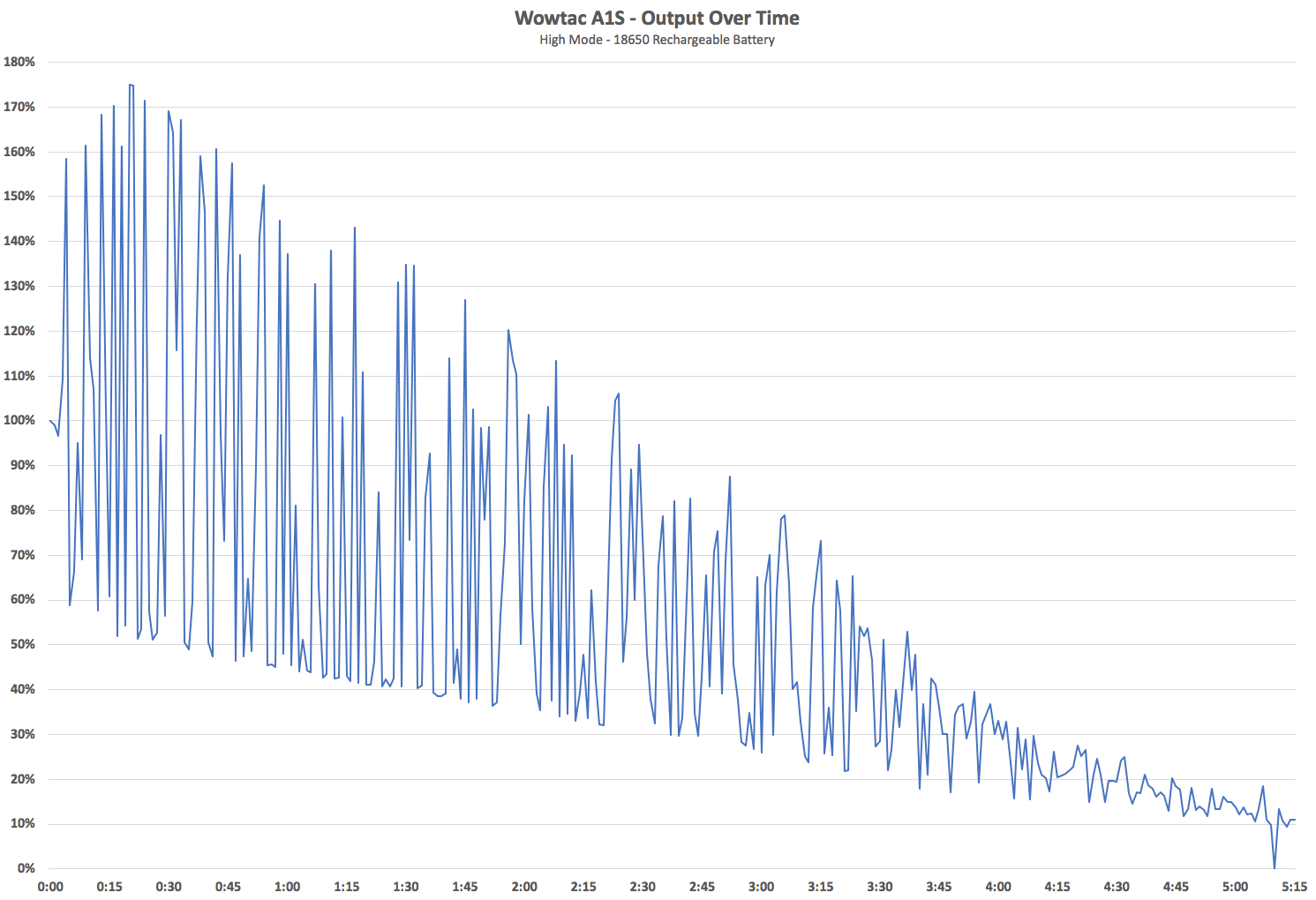

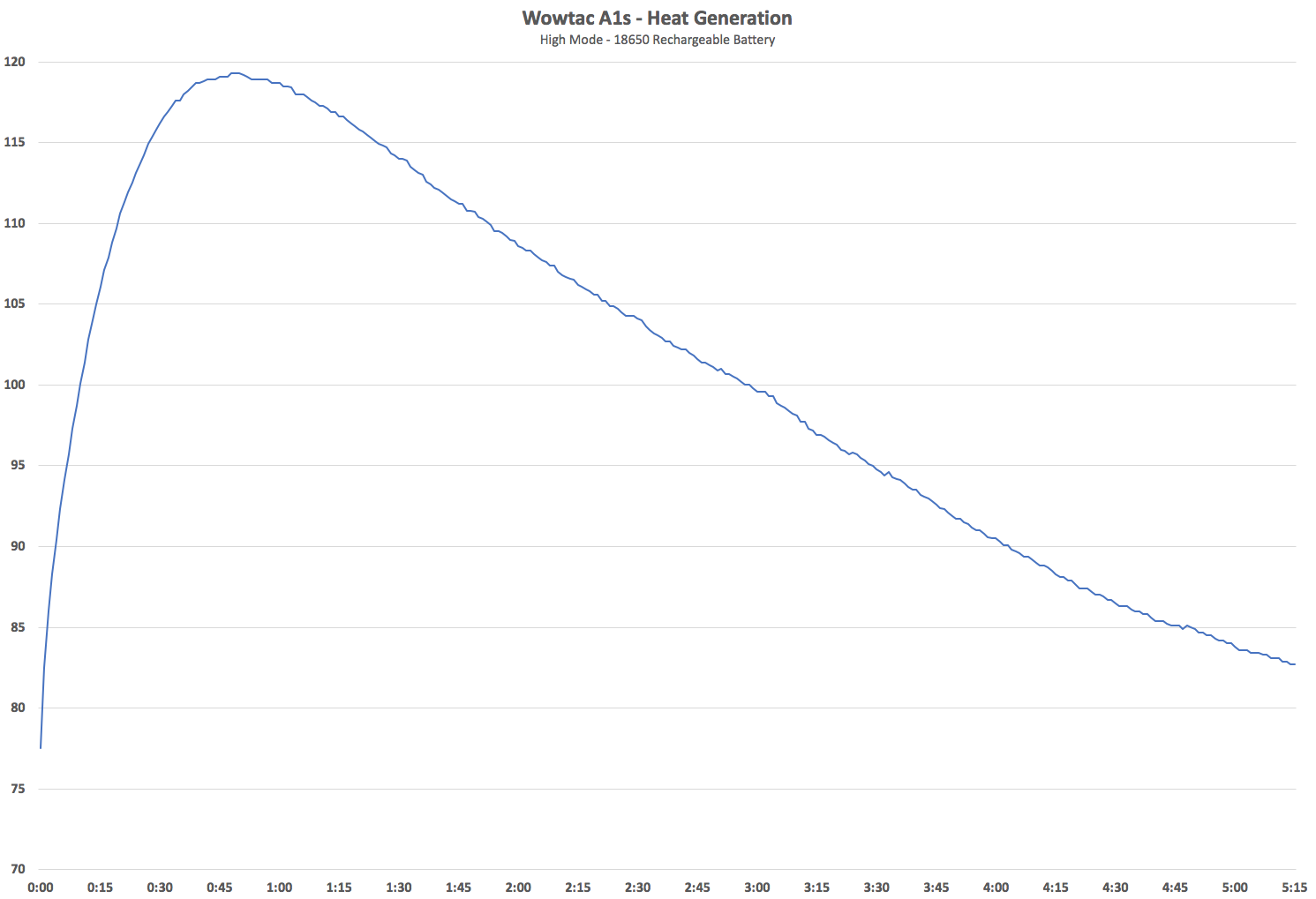
10 replies on “Wowtac A1S Flashlight Review – The Budget Torch that Couldn’t”
Wowtac A6 experience,
After reading/watching dozens of reviews, all positive I decided to purchase one as a possible replacement for my Olight SR2 mainly because of the built in charging capability.
I purchased one on Amazon from ThruNite Direct. Within a week I noticed it would randomly skip the high mode when cycling modes so I sent it back for a replacement. The replacement did the same thing so I returned it for a refund. Thinking maybe just maybe they had gotten a bad batch I ordered one from a different distributor (AtacticalDirect). This one seemed to work at first but after a month or so started doing the same thing. Being past 30 days I could not return it to Amazon so I emailed Wowtac. I have now sent them 3 emails and have not received a single response. I won’t be buying another Wowtac!
Hi John,
Sorry to hear you had a bad experience. My experiences with the Wowtac brand have definitely been a mixed bag.
I think one of the problems in the industry is the lack of transparent reviewing. Wowtac appears to send out a lot of flashlights for free, and I believe some reviewers are saying good things to keep the free products rolling in. Sadly, that creates a situation where people spend hard-earned money on products that don’t live up to expectations.
I’ve got another Wowtac light coming up soon along with a pair of Fenix, a Thrunite and an Imalent. Let me know if there is anything else specific you’d like to see. I’m a little slow in getting some of these reviews up – too many irons in the fire – but I’ll do what I can.
Thanks for reading!
-Richard
Question and Requests
You mentioned the Olight M2T Warrior in the article, however I could not find a review of it on the Flashlight Reviews page. Have you done a review of this flashlight? I currently have one in my night stand and am curious what your opinion is of this light.
For a budget general purpose “EDC” light I would recommend the Ultratac A1. I carry one every day and use it quite frequently. It uses a tail switch but I wouldn’t call it a tactical light by any means, but for a general purpose light it works well. I like the fact that it always starts on low to conserve battery life.
Also could you do a review on one of the Klarus lights? Doesn’t matter which one, I’m curious as to their quality and if their lights match their posted specs.
You know what – I don’t think I published my review on that Olight. How did I manage that? I’ll have to correct that this week. The short story is I liked it.
I haven’t gotten any time with a Klarus (outside of a tradeshow). However, I’ve got an associate that seems to like them. I’ll put one on the list for purchase & review. Ditto for the Ultratac.
-Richard
The A1S is very reliable. If there is flickering or other non working conditions you should try cleaning the ends of the “barrel” and ensure that the tail cap retaining ring is tight using two small nails or other appropriate tool.
Hi Oli,
Thanks for taking the time to read my article and sharing that your A1S is reliable. Sadly the one I purchased is not. The light failing entirely wasn’t my only problem with the flashlight, but it was the biggest.
Combined with the other Wowtac flashlights I’ve tested and my interactions with the company, I am very hesitant to recommend the brand for any serious use.
-Richard
I have three of the A1S. 1 in both vehicles and one in the house. I’ve given away three of them and I’ve supplied an unrelated business down the road from me with about 15 of them that have been sold to repeat customers without any complaints. The 10 A2S headlights have been problem free also. An A6, and A7 again no problems. I don’t like the small buttons on those two though. Both ends of the barrel need to be clean and grease free and sometimes the barrel needs to be pretty tight on the head end.
Wow. You are heavily invested in the Wowtac brand. Since you are supplying businesses with large quantities of these lights, would it be correct to guess you are a distributor or dealer?
For casual use, they might be ok. I think I said as much in the article. That’s probably how most people use them. If someone wants a cheap Chinese flashlight that seems pretty bright with a fresh set of batteries but won’t see any regular use – cool. Maybe this is the light for them.
But as a tactical flashlight? Nope.
I spent more than a decade working nights as a cop. Flashlights in that line of work need to be able to stand a beating in addition to putting out the amount of light they advertise and be in a useable configuration to enhance safe use.
It is my opinion that the company misrepresents its flashlights as shown in the specifications section of my review. Claiming to adhere to a deprecated standard in the literature and then not even following it seems shady…at best.
But hey, it’s just my opinion. That’s what I offer – nothing more and nothing less. I hope people want my honest thoughts about a product and not just to reinforce their views on an item they have already purchased.
Regardless, I appreciate your feedback. Other people reading this article will be able to see your thoughts and experiences and be able to judge if this is a light they want to spend their money on.
-Richard
I have and use the AS1 as my go to everyday carry light. I was very happy with it but after a short time the 18650 battery would not charge. It was not making contact in the battery port. I try to contact the company by email and kind of gave up. Now its been a while and I’m trying again. I orginally bought it on Amazon. Can you please help me with a replacement battery.
The A1S uses a standard 18650 rechargeable battery. You can find a variety of them here.
I hope this helps!
-Richard